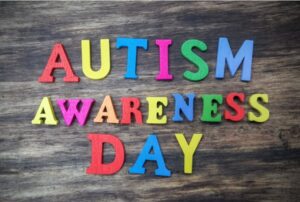Vitamin D plays a crucial role in children's growth and overall health. However, many parents are unsure how to detect a deficiency or ensure their child gets enough. This guide covers the importance of vitamin D, deficiency symptoms, and the best ways to maintain optimal levels.
Why Is Vitamin D Important?
Vitamin D is a fat-soluble nutrient essential for:
- Calcium Absorption – Helps the body absorb calcium to strengthen bones.
- Bone Growth – Works with calcium to prevent weak bones and conditions like rickets.
- Immune System Support – Helps protect children from infections and illnesses.
Without enough vitamin D, kids may experience poor bone development and frequent illnesses.
Signs of Vitamin D Deficiency in Children
Vitamin D deficiency is common, especially in kids who get limited sun exposure or don’t eat vitamin D-rich foods. Watch for these symptoms:
- Sleep Problems – Deficiency can affect nervous system regulation and sleep quality.
- Weak Bones – Issues like bow legs (O-shaped) or knock knees (X-shaped).
- Frequent Illnesses – Lower vitamin D levels weaken immunity, making kids prone to infections.
- Fatigue & Muscle Weakness – Low energy levels and muscle pain.
- Loss of Appetite – Reduced interest in eating.
How to Ensure Your Child Gets Enough Vitamin D
1. Sunlight Exposure
The body naturally produces vitamin D when exposed to sunlight. Tips for safe and effective sun exposure:
- Best Time: Mid-morning or mid-afternoon for 10–30 minutes.
- No Glass Barrier: Sunlight through windows blocks UVB rays, reducing vitamin D production.
- Skin Tone Factor: Darker skin tones need longer sun exposure.
- Outdoor Activities: Encourage outdoor play like biking, jogging, or sports.
2. Vitamin D-Rich Foods
Boost your child’s vitamin D intake with these foods:
- Fatty Fish – Salmon, mackerel, sardines.
- Dairy Products – Milk, yogurt, and cheese (often fortified).
- Egg Yolks – Simple and natural vitamin D source.
- Fortified Foods – Cereals, orange juice, and plant-based milk.
3. Vitamin D Supplements
If diet and sun exposure aren’t enough, supplements can help. Important factors:
- Dosage (as per pediatric recommendations):
- Infants (0–12 months): 400 IU/day
- Children (1–18 years): 600 IU/day
- Choose Vitamin D3 – More effective than D2.
- Various Forms – Drops, chewable tablets, and capsules available.
Factors That Affect Vitamin D Levels
Several factors influence vitamin D production and absorption:
- Geographic Location – Less sunlight in winter or high-latitude areas.
- Skin Tone – More melanin reduces vitamin D synthesis.
- Dietary Restrictions – Vegan or dairy-free diets may lack natural sources.
- Health Conditions – Disorders like celiac disease can impair absorption.
Final Thoughts
Vitamin D is vital for children’s bone development, immune health, and overall well-being. Parents can ensure adequate levels through sunlight exposure, nutrient-rich foods, and supplements when needed. Regular check-ups and consulting a pediatrician help maintain optimal vitamin D levels for healthy growth.













